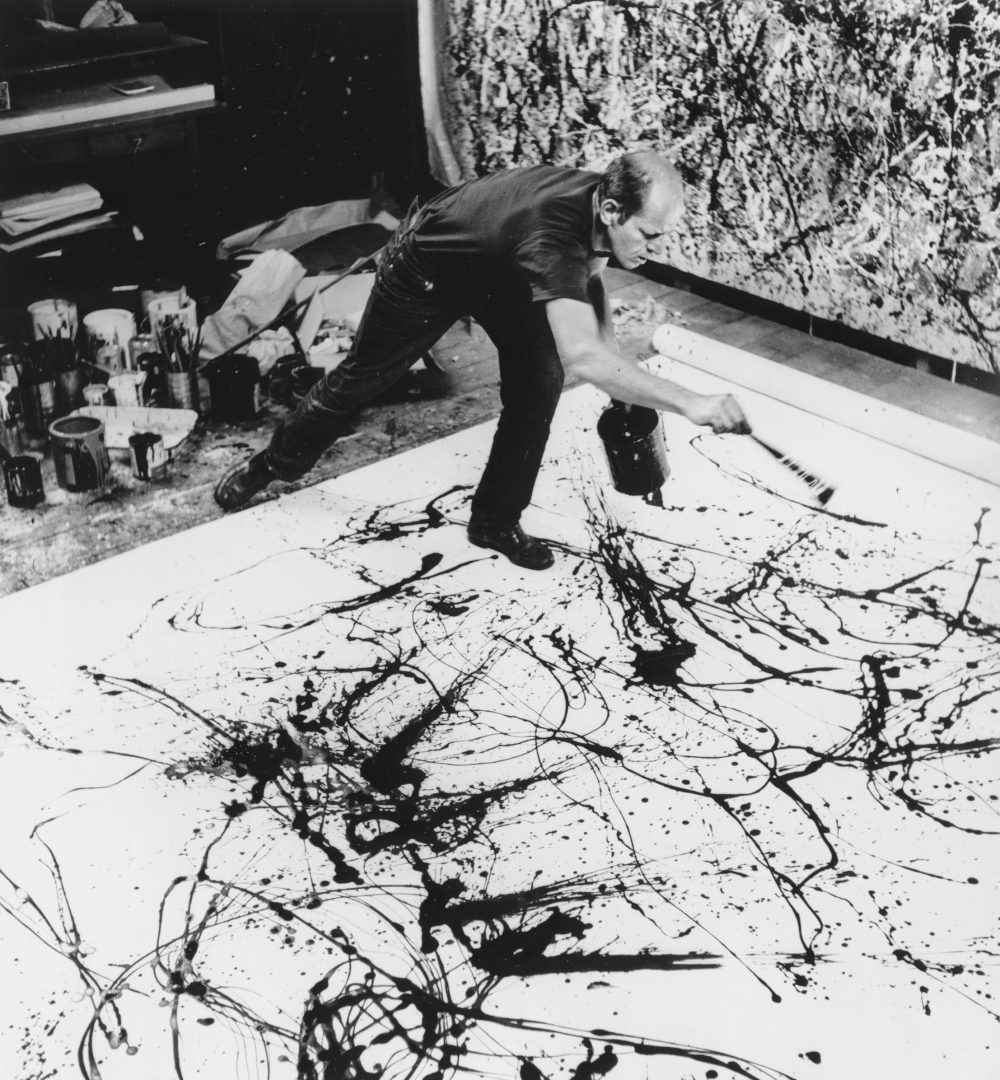Abstract Expressionism
Artistic Movements, Periods and Styles in 5 Points
We could make this publication thanks to small donations. How is 3 minutos de arte supported?
Abstract Expressionism
- It is an American movement of the 40s. A group of artists who did not share a common style but did share convictions and expression techniques.
- They typically worked on huge canvases with pure or almost pure abstraction. That is to say, they did not recognize objects or images of reality (except in some cases, as in the most remarkable series of Williem de Kooning where we can see the artist has represented a woman due to some strokes). It was an abstraction that stepped away from imagining to represent emotions and moods in the “most direct manner possible.”
- Abstract Expressionists used a method to create that was already used in Surrealism: the Psychic Automatism, which is liberating the unconscious by painting in an instinctive way, without allowing reason participate at all.
- There are two big different tendencies: action painting and color field painting. In the first one, the artist transmits his emotion or mental state by throwing or trickling the paint on the canvas spontaneously, without thinking. It is the type of painting Jackson Pollock did. He developed the dripping, which consists in placing the canvas on the floor and dripping the paint from a brush or a punctured tin. Mark Rothko proposed the other big tendency, the color field painting. In a huge canvas there are several zones of color that transmit emotions to the viewer. Rothko’s painting transmitted serenity. It was very different from the anguish that action painters introduced in their work as a consequence of the historic moment marked by violence, despair and horror.
- Usually, in Abstract Expressionism painting there are neither “ideas” —the idea, in this case, is the way of expressing— nor need of complex interpretations. It is pure painting, expressing emotions in a straightforward manner. And for this reason we can say that “we are before the artist in pure state.”
Representative artists: Gorky, Pollock, De Kooning, Rothko, Baziotes, Kline, Motherwell, Lee Krasner, Elaine de Kooning.
Image: Jackson Pollock painting with his technique called “dripping.”
Recommended links:
Abstract Expressionism, Liberation of Emotions.
One: Number 31, 1950 (1950), Jackson Pollock.
The Last Paintings of Monet: a Touch of Expressionism?
Artistic Movements, Periods and Styles in 5 Points: Surrealism.
You can also find more material using the search engine.




0 Comments